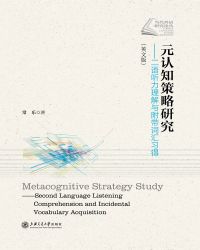7.3.1 Theoretical Implications
您可以在百度里搜索“元认知策略研究:二语听力理解与附带词汇习得(英文版) 艾草文学(www.321553.xyz)”查找最新章节!
7.3.1 Theoretical Implications
All three-time learners significantly outscored their one-time peers in listening comprehension in the study. This finding implies that low proficiency learners need time to process input for listening comprehension. For listeners with high proficiency, one time input may be sufficient if the listening text is easy, but for low-proficiency-level listeners their listening comprehension is poor even after several repetitions of the texts, and this is particularly true when the text is difficult or the listeners are unfamiliar with the content. Listeners with limited linguistic skills tend to make use of bottom-up processing when listening and thus focus more on the sounds, syllables and words to build up information from the input. To achieve this, time is the crucial factor. Learners of the kind investigated in this study clearly need adequate listening time and this can be achieved by presenting them with repetitions of the listening texts. O'Bryan and Hegelheimer (2009) argued that repeated listening allows learners “to build up to more complex bottom-up processing strategies, namely using lexical and grammatical relationships to comprehend the input and utilize the information gained from the text to make meaning... having the opportunity to repeat the text is what facilitated the creation of a framework that resulted in a more coherent summary the second time” (p.26). With more exposure to the listening texts, learners are able to carry out the bottom-up processing on which they rely for comprehension.
Schmitt (2008, p.339) argued that frequency of exposure and adequate time to process lexical items will facilitate vocabulary learning. The finding in the present study that the learners who listened three times outperformed the one-time listeners in vocabulary acquisition suggests that time is also a crucial factor for processing input for incidental vocabulary acquisition. The availability of processing time enables learners to attend to the linguistic aspects of the input, which is a necessary condition for learning new words. Especially when vocabulary is acquired as a by-product, learners have limited time to attend to lexical items as they are primarily concerned with meaning rather than form. Moreover, in an incidental learning context, the number of exposures to the target words may be very limited (with the maximum being only six exposures in this study), making it very difficult for the learners to establish form—meaning mapping. According to Barcroft (2002), the mind has a finite processing capacity, and any attention given to meaning will diminish the resources available for attention to form, and vice-versa. Webb's (2007) study of incidental acquisition from reading showed that “if learners meet unknown words ten times in context, sizable learning gains may occur. However, to develop full knowledge of a word more than ten repetitions may be needed” (p.64). Considering the nature and difficulty of listening, incidental vocabulary learning from listening tasks may require even greater word exposure.
The fact that no significant group differences were observed among the three-time listening groups in the study indicates that the metacognitive awareness training was not effective. Though learners may feel the need to use the strategies immediately after the training, it takes time for them to be able to implement them. In fact, one of the three key principles for successful metacognitive instruction identified by Veenman et al. (2006: 9) was “prolonged training to guarantee the smooth and guaranteed maintenance of metacognitive activity”. Long-term training allows learners opportunities to proceduralize the learned strategies. In order to achieve automatic strategy use, learners need to regularly apply the taught strategies, outside the classroom as well as inside. 元认知策略研究:二语听力理解与附带词汇习得(英文版)

